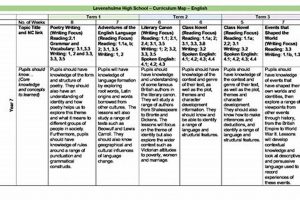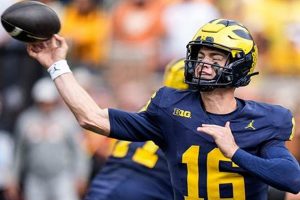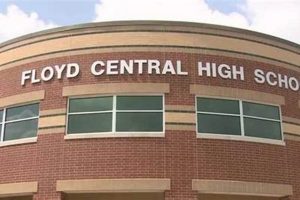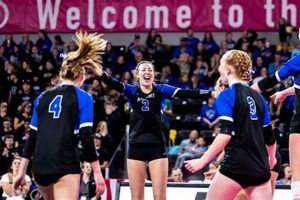A student activity rsum, a concise document highlighting extracurricular involvement, academic achievements, and relevant skills, serves as a valuable tool for college applications, scholarship opportunities, and even part-time job searches. These rsums typically include sections detailing participation in clubs, sports, volunteer activities, awards received, leadership roles held, and any special projects undertaken. A well-crafted example might list specific accomplishments within each activity, quantifying impact whenever possible, such as “Increased club membership by 20% through targeted recruitment strategies.”
Such comprehensive records of student engagement offer a powerful way to showcase a student’s well-rounded profile beyond academic transcripts. They demonstrate commitment, leadership potential, and specific talents or interests, providing crucial context for admissions committees and scholarship reviewers. Historically, these documents have evolved from simple lists of activities to more strategically crafted presentations of a student’s unique strengths and experiences. This shift reflects the increasing competitiveness of college admissions and the growing emphasis on holistic evaluation of applicants.
This article will further explore how to create an effective student activity rsum, including best practices for formatting, content selection, and tailoring the document to specific audiences. It will also delve into common pitfalls to avoid and offer concrete examples demonstrating successful implementation.
Tips for Creating Effective Student Activity Rsums
Developing a strong student activity rsum requires careful planning and execution. The following tips offer guidance for creating a document that effectively showcases a student’s accomplishments and potential.
Tip 1: Quantify Achievements: Rather than simply listing activities, quantify contributions whenever possible. For example, instead of “Member of Debate Club,” write “Member of Debate Club, contributing to three winning debates and advancing to the regional semi-finals.”
Tip 2: Focus on Impact: Emphasize the impact of participation in each activity. Highlight leadership roles, specific projects, and tangible results achieved. For instance, instead of “Volunteer at local library,” write “Volunteer at local library, assisting with children’s reading programs and organizing a successful book drive that collected over 200 donations.”
Tip 3: Tailor to the Audience: Adapt the rsum to the specific opportunity. Highlight experiences relevant to the target college, scholarship, or job. A student applying for a science scholarship should emphasize science-related activities and achievements.
Tip 4: Maintain Consistency: Use a consistent format throughout the document. Maintain a professional font, clear headings, and concise language. Ensure dates, locations, and descriptions are accurate and free of errors.
Tip 5: Seek Feedback: Request feedback from teachers, counselors, or mentors. An outside perspective can help identify areas for improvement and ensure the rsum effectively communicates the student’s strengths.
Tip 6: Use Action Verbs: Begin activity descriptions with strong action verbs. Words like “led,” “managed,” “organized,” and “developed” showcase initiative and accomplishment.
Tip 7: Keep it Concise: Aim for a one-page rsum, especially for high school students. Prioritize the most relevant and impactful experiences. Brevity and clarity are essential.
By following these tips, students can create compelling activity rsums that highlight their unique qualifications and increase their chances of success in their academic and professional pursuits.
This guidance provides a strong foundation for crafting a standout student activity rsum. The following sections will further elaborate on specific strategies and examples to maximize effectiveness.
1. Activities List
The Activities List forms the backbone of a student activity rsum, providing a structured overview of extracurricular involvement, volunteer work, and other relevant experiences. This list serves as the foundation upon which other details are built, allowing reviewers to quickly grasp the breadth and depth of a student’s engagement. A well-crafted Activities List demonstrates commitment beyond academics, showcasing a diverse range of interests and experiences. For example, an Activities List might include participation in the debate team, volunteering at a local hospital, membership in the school’s environmental club, and involvement in a community theater production. The inclusion of such diverse activities illustrates a well-rounded individual with a variety of skills and interests.
The effectiveness of an Activities List hinges on several factors. Chronological organization, starting with the most recent activities, offers a clear progression of involvement. Concise descriptions, using action verbs and quantifiable achievements, provide context and impact. Tailoring the list to the specific applicationhighlighting activities relevant to the target institution or programenhances its effectiveness. For instance, a student applying for a science scholarship would prioritize science-related activities, detailing accomplishments and quantifying contributions whenever possible. This targeted approach maximizes the impact of the Activities List, aligning experiences with specific opportunities.
A comprehensive Activities List, strategically crafted and tailored to the intended audience, serves as a powerful tool in presenting a holistic view of a student’s accomplishments and potential. It lays the groundwork for a compelling narrative of engagement and commitment, contributing significantly to the overall impact of the student activity rsum. Navigating the nuances of creating such a list can present challenges, but understanding its importance as a core component of the rsum empowers students to effectively showcase their unique strengths and experiences. Subsequent sections will delve into strategies for optimizing each entry within the Activities List, maximizing its impact on college applications, scholarship opportunities, and other pursuits.
2. Quantifiable Achievements
Quantifiable achievements represent a critical element within student activity rsums (often referred to as “brag sheets”). These quantifiable achievements provide concrete evidence of a student’s impact and effectiveness within their activities. Instead of simply listing participation, quantifying achievements demonstrates the depth of involvement and tangible results produced. This data-driven approach adds weight and credibility to a student’s claims, transforming general statements into specific accomplishments. For instance, stating “Led fundraising efforts for the school’s annual charity drive” becomes significantly more impactful when quantified as “Led fundraising efforts resulting in a 30% increase in donations, exceeding the target goal by $2,000.” This quantifiable data provides concrete evidence of leadership and effectiveness.
The inclusion of quantifiable achievements offers several benefits. It provides objective measures of success, allowing reviewers to assess contributions accurately. It differentiates a student from others who may have participated in similar activities but with varying levels of impact. Furthermore, it demonstrates an understanding of the importance of data and metrics, a valuable skill in many academic and professional fields. A student applying for a business program, for example, can strengthen their application by quantifying the impact of their involvement in a school entrepreneurship club, such as “Increased club membership by 40% through targeted marketing strategies.” This demonstrates not only leadership but also an understanding of business principles. Similarly, a student applying for a science scholarship could highlight the quantifiable results of a science fair project, such as “Developed a novel method for water purification that resulted in a 15% improvement in filtration efficiency.” This showcases analytical skills and a data-driven approach to problem-solving.
In summary, quantifiable achievements transform a list of activities into a compelling narrative of impact. This data-driven approach strengthens a student’s profile, providing concrete evidence of their abilities and contributions. Understanding the importance of quantifying achievements empowers students to effectively showcase their accomplishments, maximizing the effectiveness of their student activity rsums in the competitive landscape of college admissions and scholarship applications.
3. Leadership Roles
Documentation of leadership roles within a student activity rsum significantly enhances a candidate’s profile, demonstrating initiative, responsibility, and the ability to guide and inspire others. These roles offer concrete evidence of a student’s capacity to contribute meaningfully to a team or organization. Effective presentation of leadership experiences provides valuable insights into a student’s character and potential, often carrying substantial weight in selection processes for college admissions, scholarships, and other opportunities. This section explores key facets of showcasing leadership effectively on a student activity rsum.
- Formal Leadership Positions
Formal leadership positions, such as club president, team captain, or student government representative, provide clear evidence of leadership experience. These roles often involve directing group activities, managing resources, and making key decisions. Holding a formal position demonstrates a commitment to responsibility and the ability to guide a group toward common goals. For example, serving as the president of the debate club demonstrates organizational skills, public speaking abilities, and the capacity to lead a team through competition. Clearly articulating the responsibilities and accomplishments within these roles, such as “Led the debate team to a regional championship by implementing new training strategies” adds significant weight to the experience.
- Informal Leadership Contributions
Even without a formal title, students can demonstrate leadership through informal contributions. Mentoring younger students, taking initiative on projects, and organizing events all showcase leadership qualities. These informal contributions highlight proactive engagement and the capacity to influence positively within a group. For example, a student might describe their role in a school play not just as “actor,” but as “Actor and student director, mentoring younger cast members and assisting with rehearsal coordination.” Highlighting these informal leadership aspects demonstrates a willingness to go above and beyond and contribute meaningfully to the group’s success.
- Progression of Leadership
Demonstrating a progression of leadership roles within an activity further strengthens a student’s profile. Starting as a member and advancing to a leadership position demonstrates commitment, growth, and increasing responsibility. This progression provides compelling evidence of dedication and developing leadership capabilities. For example, a student could describe their involvement in the school newspaper as “Reporter, then Section Editor, then Managing Editor,” highlighting the increasing scope of responsibility and demonstrating consistent growth within the organization.
- Impact of Leadership
Quantifying the impact of leadership roles adds further substance to these experiences. Highlighting specific achievements and contributions resulting from leadership efforts provides concrete evidence of effectiveness. Metrics such as increased membership, improved team performance, or successful fundraising campaigns demonstrate tangible results achieved through leadership. For instance, a student body president could highlight their leadership by stating “Implemented a new school recycling program that increased recycling rates by 25% and reduced waste disposal costs by 10%.” This quantifiable impact underscores the effectiveness of their leadership and its positive contribution to the school community.
By strategically showcasing leadership roles, students can create compelling narratives of initiative, responsibility, and impact. These experiences provide valuable context within a student activity rsum, demonstrating qualities highly sought after by colleges, scholarship committees, and future employers. A clear understanding of how to effectively present leadership contributions allows students to highlight their strengths and maximize the impact of their rsum, showcasing their potential for future success. Further sections will delve into specific examples and strategies for effectively articulating these leadership experiences.
4. Skills Summary
A Skills Summary within a student activity rsum (often referred to as a “brag sheet”) provides a concise overview of a student’s key competencies, linking extracurricular experiences to tangible abilities. This section translates participation in activities into demonstrable skills, offering a snapshot of a student’s qualifications relevant to academic pursuits, scholarship applications, and future career paths. A well-crafted Skills Summary strengthens a rsum by highlighting transferable skills and demonstrating how experiences have cultivated specific abilities.
- Technical Skills
Technical skills represent specific proficiencies acquired through training or experience. Within a student activity rsum, these skills often relate to extracurricular involvement and demonstrate practical abilities. Examples include proficiency in specific software programs (e.g., Adobe Photoshop, coding languages), laboratory techniques, musical instrument proficiency, or artistic abilities. Listing technical skills provides concrete evidence of a student’s capabilities, particularly relevant for applications in STEM fields, arts programs, or technical vocational pursuits. For example, a student applying for a computer science program might list proficiency in Python, Java, or C++, demonstrating relevant technical skills acquired through coding clubs or personal projects.
- Communication Skills
Effective communication skills are essential for success in various academic and professional settings. Participation in activities such as debate club, Model UN, or drama club cultivates skills in public speaking, persuasive writing, active listening, and interpersonal communication. A student can demonstrate these skills on their rsum by highlighting specific achievements, such as winning a debate competition, delivering a successful presentation, or effectively mediating a group discussion. These examples provide concrete evidence of communication proficiency, valuable for any field of study.
- Leadership Skills
Leadership skills demonstrate the ability to guide, motivate, and manage individuals or teams. Holding leadership positions within clubs, sports teams, or student government provides opportunities to develop skills in delegation, decision-making, conflict resolution, and team building. A Skills Summary allows students to highlight these abilities by referencing specific accomplishments achieved through leadership, such as organizing a successful fundraising event, leading a team to victory in a competition, or implementing a new initiative that benefited the school community.
- Organizational and Time Management Skills
Balancing academic coursework with extracurricular activities, volunteer work, and other commitments requires strong organizational and time management skills. A student can demonstrate these abilities by highlighting their capacity to manage multiple responsibilities effectively. Examples include successfully juggling a demanding academic schedule with participation in several extracurricular activities, leading a complex project while maintaining academic performance, or effectively managing time to meet deadlines and fulfill commitments. These skills are highly transferable and valuable in any academic or professional pursuit.
By strategically presenting a Skills Summary, students connect their experiences to tangible abilities, demonstrating the value and relevance of their extracurricular involvement. This section strengthens a student activity rsum by providing a concise and compelling overview of key competencies, enhancing their profile for college admissions, scholarship applications, and future career opportunities. The Skills Summary effectively translates participation into demonstrable skills, offering a powerful snapshot of a student’s qualifications and potential.
5. Awards and Honors
The “Awards and Honors” section of a student activity rsum, often referred to as a “brag sheet,” provides a platform to showcase formal recognition of accomplishments. This section substantiates a student’s achievements, offering external validation of their skills, dedication, and contributions. Awards and honors demonstrate excellence in various domains, ranging from academics and extracurricular activities to community involvement and personal development. Strategic inclusion of these accolades strengthens a rsum by providing concrete evidence of a student’s capabilities and potential.
- Academic Recognition
Academic awards, such as honor roll designations, departmental awards, or subject-specific recognitions, validate a student’s commitment to academic excellence. These achievements demonstrate strong performance in specific subjects and overall dedication to learning. Examples include placement on the Dean’s List, earning a departmental award for outstanding performance in mathematics, or receiving recognition for exemplary research in a science fair. In the context of a brag sheet, academic awards provide concrete evidence of a student’s intellectual capabilities and commitment to rigorous academic pursuits.
- Extracurricular Achievements
Awards and honors earned through extracurricular activities highlight a student’s talents and contributions beyond the classroom. These achievements demonstrate dedication, skill development, and leadership within specific areas of interest. Examples include winning a regional championship in a sport, earning first place in a debate tournament, receiving recognition for outstanding performance in a theatrical production, or being awarded a prize for a scientific project. Inclusion of these extracurricular accolades on a brag sheet provides tangible evidence of a student’s passion, commitment, and achievement in diverse areas.
- Community Involvement Recognition
Recognition for community involvement demonstrates a student’s commitment to service and civic engagement. Awards for volunteer work, community leadership, or contributions to local organizations highlight a student’s character and dedication to making a positive impact beyond their personal pursuits. Examples include receiving a community service award from a local organization, being recognized for leadership in a volunteer group, or earning an award for outstanding contributions to a community project. These accolades, included on a brag sheet, demonstrate a student’s commitment to social responsibility and their capacity to contribute meaningfully to their community.
- Scholarship and Competition Awards
Scholarships and awards earned through competitive processes represent significant achievements, showcasing a student’s abilities and potential in specific fields. These awards often involve rigorous selection criteria, demonstrating a student’s exceptional talent, dedication, and accomplishments. Examples include winning a national science competition, earning a prestigious scholarship based on academic merit, or receiving recognition in a national arts competition. Including these awards on a brag sheet adds substantial weight to a student’s profile, demonstrating their ability to excel in competitive environments and highlighting their potential for future success.
The “Awards and Honors” section significantly strengthens a student activity rsum by providing external validation of a student’s accomplishments and potential. This section offers concrete evidence of excellence in various domains, complementing the narrative of activities and experiences presented throughout the rsum. Strategic inclusion of awards and honors enhances a student’s profile, showcasing their achievements and demonstrating their capacity for success in academic, extracurricular, and community endeavors. This curated presentation of accolades contributes significantly to the overall impact of a brag sheet, providing compelling evidence of a student’s qualifications and potential for future contributions.
6. Targeted Content
Targeted content within a student activity rsum, often referred to as a “brag sheet,” refers to the strategic selection and presentation of information relevant to the specific audience and opportunity. A targeted approach maximizes the impact of the rsum by highlighting experiences and skills directly aligned with the selection criteria of a particular college, scholarship, or program. This customization demonstrates a student’s understanding of the opportunity and their thoughtful consideration of how their qualifications align with the specific requirements and values of the target institution or organization. Generic rsums often fail to capture the attention of reviewers, while targeted content showcases a student’s genuine interest and suitability for the specific opportunity.
- Relevance to the Target Audience
Relevance serves as the cornerstone of targeted content. A student applying for a science scholarship should emphasize science-related coursework, research projects, science club involvement, and any science-related awards or achievements. Conversely, a student applying for a humanities program might highlight experiences in debate, writing, history clubs, or community theater. Aligning the content with the specific interests and values of the target audience demonstrates a student’s understanding of the opportunity and increases the likelihood of resonating with reviewers. For example, a student applying to a university with a strong emphasis on community service should highlight their volunteer experiences and contributions to community organizations.
- Highlighting Specific Skills and Experiences
Targeted content prioritizes the skills and experiences most relevant to the desired opportunity. A student applying for a leadership position should highlight experiences demonstrating leadership abilities, such as captaining a sports team, serving as a club president, or organizing a community event. Similarly, a student applying for a research-intensive program should emphasize research projects, laboratory experience, and analytical skills. This focused approach ensures that the most relevant qualifications are prominently showcased, capturing the attention of reviewers and demonstrating a clear connection between the student’s abilities and the requirements of the opportunity. A student applying for a journalism internship, for example, would showcase writing samples, experience with school publications, and any journalism-related awards.
- Tailoring Language and Tone
Targeted content extends to the language and tone used within the rsum. While maintaining a professional tone throughout, the specific language used to describe experiences can be tailored to resonate with the target audience. A student applying for a program with a strong focus on innovation might use language emphasizing creativity, problem-solving, and initiative. Conversely, a student applying for a program emphasizing community engagement might use language highlighting collaboration, teamwork, and social impact. This nuanced approach demonstrates a student’s understanding of the target audience’s values and their ability to communicate effectively within that specific context.
- Omitting Irrelevant Information
Just as important as including relevant information is omitting irrelevant details. While a well-rounded profile is valuable, a targeted rsum prioritizes experiences directly related to the specific opportunity. Including extraneous information can dilute the impact of the rsum and distract from the student’s most relevant qualifications. For instance, a student applying for a computer science program need not detail extensive involvement in unrelated activities like culinary club or knitting club, unless there is a clear connection to demonstrate transferable skills such as attention to detail or problem-solving. A concise and focused rsum allows reviewers to quickly identify a student’s key qualifications and assess their suitability for the specific opportunity.
Targeted content transforms a generic student activity rsum into a powerful tool for showcasing a student’s most relevant qualifications and demonstrating a genuine interest in the specific opportunity. By carefully selecting and presenting information aligned with the target audience’s values and requirements, students maximize the impact of their rsum, increasing their chances of success in the competitive landscape of college admissions, scholarship applications, and other pursuits. A targeted approach demonstrates a student’s understanding of the opportunity, their thoughtful consideration of their own qualifications, and their ability to communicate effectively within a specific context. This strategic approach to content significantly enhances the effectiveness of a brag sheet, showcasing a student’s potential and increasing their likelihood of achieving their academic and professional goals.
Frequently Asked Questions about Student Activity Rsums
This section addresses common inquiries regarding the development and utilization of student activity rsums, often referred to as “brag sheets,” within the context of high school applications and opportunities.
Question 1: What differentiates a student activity rsum from a traditional rsum?
A student activity rsum focuses specifically on extracurricular involvement, academic achievements, volunteer experiences, and skills developed during high school. Traditional rsums typically emphasize work experience and are less relevant for students with limited professional history.
Question 2: When should a student begin compiling information for an activity rsum?
Beginning early in high school allows students to maintain a running record of activities, achievements, and skills. This proactive approach simplifies the process of creating a comprehensive rsum when needed for college applications, scholarships, or other opportunities.
Question 3: How frequently should a student update their activity rsum?
Regular updates, at least once per semester or after significant accomplishments, ensure the rsum remains current and accurately reflects a student’s evolving profile. This consistent maintenance prevents omissions and ensures readily available, up-to-date information.
Question 4: How should a student quantify achievements on their activity rsum?
Quantifying achievements provides concrete evidence of impact. Whenever possible, use metrics, numbers, and specific examples to demonstrate the results of participation. For instance, quantify fundraising efforts with specific amounts raised or leadership roles by noting the size of the team managed.
Question 5: How can a student tailor their activity rsum for specific applications?
Review the requirements and values of the target institution or organization. Highlight experiences and skills relevant to the specific opportunity. A student applying for a science scholarship, for example, should emphasize science-related activities and achievements.
Question 6: Where can students find additional resources and support for creating effective activity rsums?
High school guidance counselors, teachers, and mentors can provide valuable feedback and support. Online resources and college preparation websites also offer templates, examples, and guidance for crafting effective student activity rsums.
By addressing these common inquiries, this FAQ section aims to provide clarity and guidance regarding the development and effective utilization of student activity rsums. A well-crafted rsum serves as a valuable tool for showcasing a student’s unique qualifications and potential, contributing significantly to their success in various academic and professional pursuits.
Further sections of this article will delve into specific examples and strategies for crafting compelling student activity rsums tailored to various opportunities.
Conclusion
Effective student activity rsums (often referred to as “brag sheets”) serve as crucial tools for high school students navigating the competitive landscape of college applications, scholarship opportunities, and other pursuits. This exploration has highlighted the essential components of a compelling rsum, emphasizing the significance of quantifiable achievements, impactful leadership roles, a targeted skills summary, relevant awards and honors, and content tailored to specific audiences. The strategic presentation of extracurricular involvement, academic accomplishments, and relevant skills provides a comprehensive picture of a student’s potential, extending beyond academic transcripts to showcase a well-rounded profile.
Careful attention to detail, accurate representation of experiences, and thoughtful alignment with specific opportunities maximize the effectiveness of a student activity rsum. Investing time and effort in crafting a comprehensive and targeted document empowers students to present their unique qualifications effectively, increasing their chances of success. A well-crafted rsum serves as a powerful advocacy tool, enabling students to articulate their strengths, demonstrate their potential, and ultimately achieve their academic and professional aspirations. The ability to effectively communicate one’s accomplishments and aspirations becomes increasingly vital in a competitive environment; a thoughtfully prepared student activity rsum provides the foundation for precisely this form of self-advocacy.







